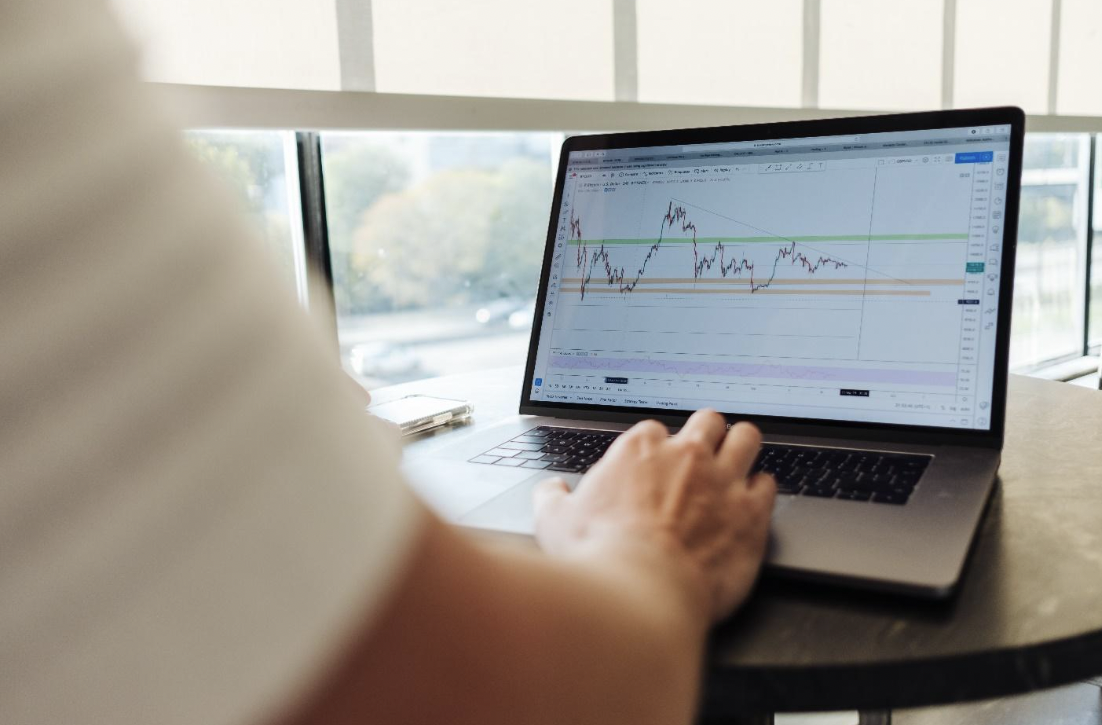NEW YORK, NY / ACCESSWIRE / May 24, 2023 / While the S&P 500 has been rising steadily since the end of March, it's fast approaching 4,200 which has been a resistance level it's struggled to break out of for the better part of last year. As a result, many traders are closely watching market indicators for signs of whether a breakout could happen or if the index will once again slide back down. For many, the latter scenario seems more likely. Here are some of the bearish assumptions traders are prepping for in the upcoming months.

Q1 Earnings Disappointments Seem Likely
Optimism was high that Q1 financial results releasing in April and May would be strong for many sectors, especially tech. But, so far, expectations seem to have been unrealistically high as earnings released so far have barely nudged the index up.
If earnings reports from the rest of the tech sector underperform, the weight of their earnings disappointments could pull the entire index down, since tech stocks currently make up almost 25% of the securities in the index. Even if tech manages to meet expectations, the lift might not be enough to offset the overall earnings decline anticipated for Q1 2023.
Interest Rate Hikes On Pause
Despite somewhat slowed inflation, analysts correctly anticipated another 25 basis point hike* in May. While inflation slowed slightly in March and is forecasted to continue decelerating through the year, analysts don't expect it to approach the 2% target the Federal Reserve is looking for until at least the end of 2024.
With little hope that inflation will slow enough for rates to come back down, traders may be anticipating a rate hike pause. If not, another hike may trigger another stock market pullback as investors flee equity markets in favor of money market funds.
According to Bloomberg Data, in March, the same month the Federal Reserve raised interest rates to 4.75%-5.00%, investors were net sellers, with approximately $41 billion flowing out of stocks while a whopping $363 billion poured into money market funds. While that was partially fueled by the fallout from the banking sector, a disappointing earnings season occurring alongside this next anticipated hike could fuel a similar crisis of confidence in the stock market.
Market Indicators Point To Possible Recession On The Horizon
Inflation might be cooling, but economists are far from optimistic about the health of the U.S. economy. In March, the Conference Board's Leading Economic Index (LEI) fell 1.2%1, dipping to its lowest level since 2020.
The LEI is composed of various economic indicators that are used to forecast the future health of the economy, including consumer confidence, unemployment claims, new manufacturer orders and interest rate spread. In the last report, nearly every indicator in the index was down, which, the Board said, suggests a recession could start as soon as mid-2023.
If those forecasts prove true, the S&P 500 may very well take a beating. Historically, the index declines 31.5% on average during a recessionary period 2. It may not plummet that sharply all at once as it did in early 2020, but traders would likely see a steady decline, potentially breaking below its 3,850 support level.
Consider Trading Bearish Assumptions With Direxion's Daily S&P 500 Bear ETF
With market conditions appearing to not look strong enough to indicate a recovery just yet, the S&P 500 is dangerously close to its long-held 4,200 resistance level. For some traders, that means it might be time to start planning bearish trades.
To do that, consider using Direxion's Daily S&P 500 Bear 1X Shares (SPDN). The exchange-traded fund (ETF) seeks daily investment results, before fees and expenses, of 100% of the inverse (or opposite) of the performance of the S&P 500® Index. There is no guarantee the fund will meet its stated investment objective. The index is made up of the top 500 large-cap stocks in the U.S. market, and the current top ten holdings in the index include:
| INDEX TOP TEN HOLDINGS % as of 3/31/23. Holdings Subject to change and risk. | ||
Apple | 7.17 | |
Microsoft | 6.25 | |
Amazon.com | 2.68 | |
Nvidia | 1.99 | |
Alphabet - Class A | 1.80 | |
Tesla | 1.62 | |
Berkshire Hathaway | 1.62 | |
Alphabet - Class C | 1.57 | |
Meta Platforms | 1.37 | |
Exxon | 1.31 |
SPDN is built for short-term trading so it's important to use SPDN with a well-tested strategy and avoid holding it for periods longer than a day. When used carefully, however, Direxion believes it may be a useful tool for seeking yield or potentially hedging a portfolio in a market downturn.
Featured photo by Jason Briscoe on Unsplash.
* One basis point is equal to 1/100th of 1%.
1 https://www.conference-board.org/topics/us-leading-indicators
2 https://www.putnam.com/advisor/content/perspectives/9535-sp-500-index-earnings-and-p-e-multiple-performance-during-u-s-recessions
The S&P 500® Index (SPXT) is designed to be comprised of stocks that are the 500 leading, large-cap U.S. listed issuers. The securities are selected on the basis of market capitalization, financial viability of the company, sector representation, public float, liquidity and price of a company's shares outstanding. The Index is a float-adjusted, market capitalization-weighted index. One cannot directly invest in an index.
An investor should carefully consider a Fund's investment objective, risks, charges, and expenses before investing. A Fund's prospectus and summary prospectus contain this and other information about the Direxion Shares. To obtain a Fund's prospectus and summary prospectus call 866-476-7523 or visit our website at www.direxion.com. A Fund's prospectus and summary prospectus should be read carefully before investing.
The "S&P 500 Index" is a product of S&P Dow Jones Indices LLC ("SPDJI"), and has been licensed for use by Rafferty Asset Management, LLC ("Rafferty"). Standard & Poor's® and S&P® are registered trademarks of Standard & Poor's Financial Services LLC ("S&P"); Dow Jones® is a registered trademark of Dow Jones Trademark Holdings LLC ("Dow Jones"); and these trademarks have been licensed for use by SPDJI and sublicensed for certain purposes by Rafferty. Rafferty's ETFs are not sponsored, endorsed, sold or promoted by SPDJI, Dow Jones, S&P, their respective affiliates and none of such parties make any representation regarding the advisability of investing in such product(s) nor do they have any liability for any errors, omissions, or interruptions of the S&P 500® Index.
Leveraged and Inverse ETFs pursue daily leveraged investment objectives which means they are riskier than alternatives which do not use leverage. They seek daily goals and should not be expected to track the underlying index over periods longer than one day. They are not suitable for all investors and should be utilized only by sophisticated investors who understand leverage risk and who actively manage their investments.
Direxion Shares Risks - An investment in the Fund involves risk, including the possible loss of principal. The Fund is non-diversified and includes risks associated with the Fund concentrating its investments in a particular industry, sector, or geographic region which can result in increased volatility. The use of derivatives such as futures contracts and swaps are subject to market risks that may cause their price to fluctuate over time. Risks of the Fund include Effects of Compounding and Market Volatility Risk, Derivatives Risk, Market Risk, Counterparty Risk, Rebalancing Risk, Shorting Risk, Cash Transaction Risk, Intra-Day Investment Risk, Daily Inverse Index Correlation Risk, Other Investment Companies (including ETFs) Risk, Tax Risk, and risks specific to the securities that comprise the S&P 500® Index. Please see the summary and full prospectuses for a more complete description of these and other risks of the Fund.
Distributor: Foreside Fund Services, LLC
Contact:
David Fajardo
[email protected]
SOURCE: Direxion




